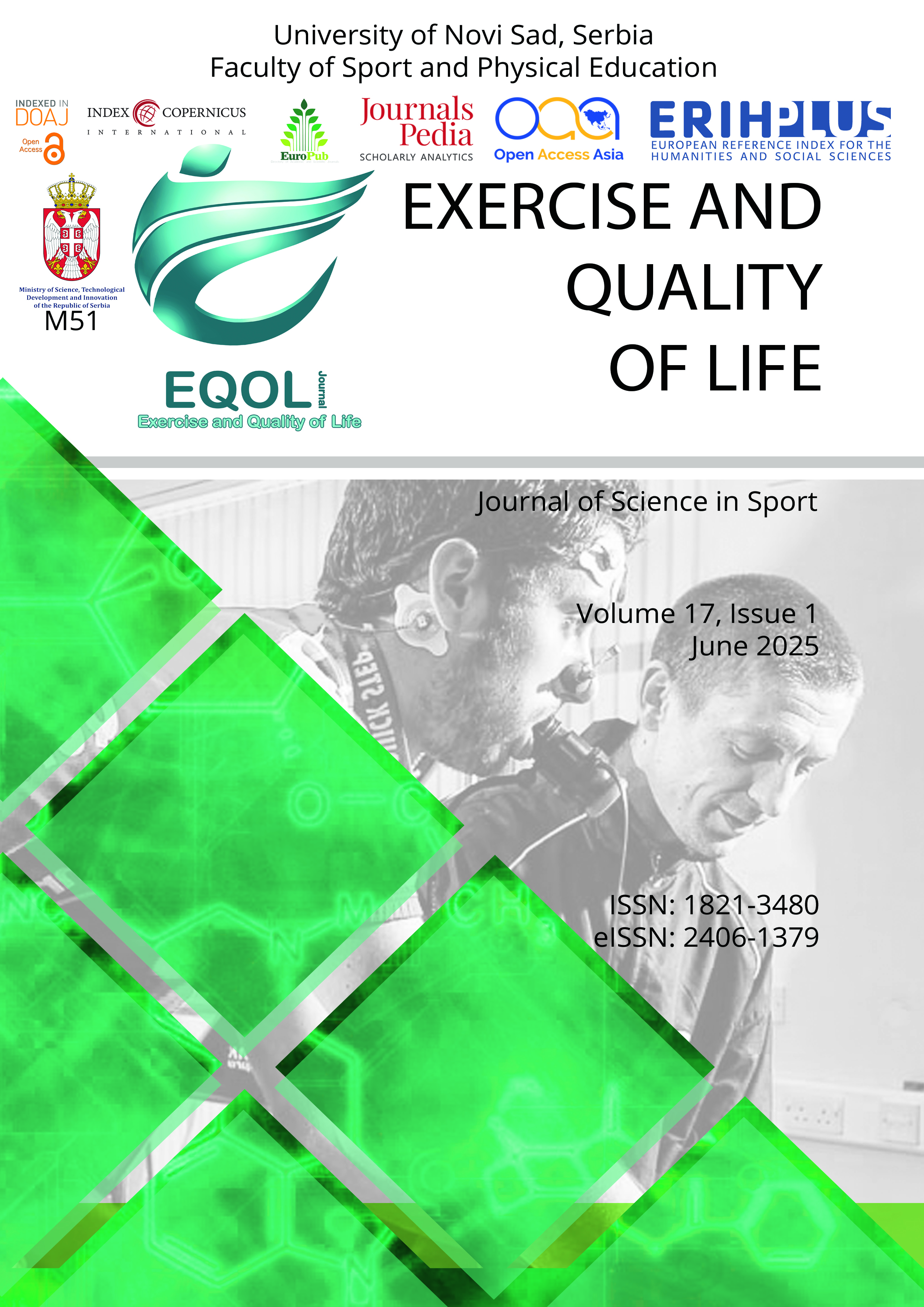Current issue

Volume 17, Issue 1, 2025
Online ISSN: 2406-1379
ISSN: 1821-3480
Volume 17 , Issue 1, (2025)
Published: 15.06.2025.
Open Access
All issues
Contents
15.12.2024.
Original scientific paper
Exploring self-declared prohibited substance use in combat sports: The Serbian perspective
The exploratory study is grounded in field research, utilizing semi-structured interviews with active, former, and recreational athletes in combat sports. The first section outlines key theoretical frameworks that address everyday life, lifestyles, and the issue of doping. The second section presents the main findings from the field research. Interviewees detailed the positive effects of doping on athletic performance while also acknowledging significant side effects, including physical and psychological consequences. Participants highlighted that the availability of information on doping has increased with the advent of the Internet and specialized retail outlets. The testimonies indicate that the culture of doping is driven not only by the pursuit of enhanced sports performance but also by aesthetic considerations and social pressures, underscoring the complexity of doping use in both professional and recreational sports. The study concludes that doping is a pervasive issue in combat sports, necessitating comprehensive social action and collaboration among policymakers, social stakeholders, and researchers across multiple disciplines, with a prominent role for physical education and sports sciences.
Vuk Raonić, Ivana Milovanović, Roberto Roklicer, Marko Manojlović, Tatjana Trivić, Patrik Drid
15.12.2021.
Review scientific paper
The efficiency of proprioceptive training in preventing injuries to team athletes: A systematic review
The aim of this systematic review was to evaluate the effectiveness of proprioceptive training in the prevention of lower extremity injuries, especially the ankle and knee joint, in team athletes. PRISMA recommendations were applied for this research. PubMed, ScienceDirect, and BioMed Central were used to identify relevant studies. The methodological quality of studies was assessed using the Physiotherapy Evidence Database-PEDro scale. Only 7 research met the eligibility criteria, and their outcomes were presented. Proprioceptive training has been shown to be very effective in preventing ankle injuries, especially in recurrent ankle sprains. However, in 3 of 4 studies lacked the effects of proprioceptive training in the prevention of knee and ACL injuries. Based on the results of the analyzed research, I can conclude that proprioceptive training is a very effective training tool in the prevention of ankle sprains in the population of team athletes, but proprioceptive training is not sufficient as the only training component in preventing knee injuries.
Marko Manojlović























